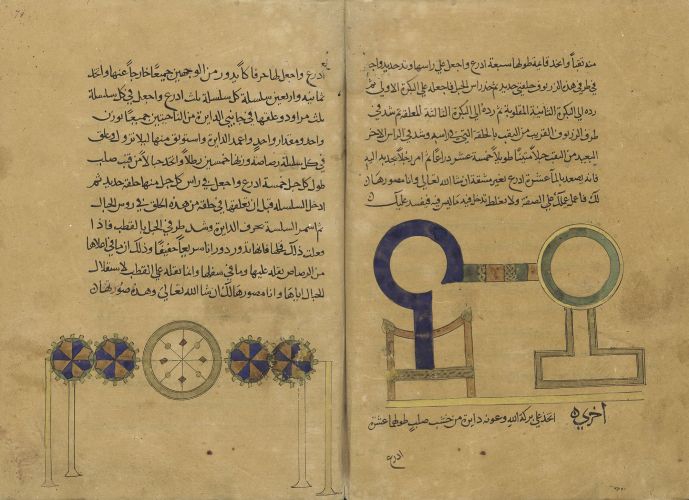Error
Perpetual wheel with oscillating masses
The wheel consists of a rim and a hub to which metal balls are attached by means of strings. During rotation, the strings limit the movement of the spheres, which move by describing an asymmetrical path with respect to the centre of rotation. The apparent overbalance led to the belief that the movement of the spheres could determine the rotation of the rim in a perpetual manner. This device appears for the first time in a short Arabic treatise by an anonymous author dedicated to the study of hydraulic wheels, known in Europe since the 13th century, of which we have four copies held in Oxford, Leiden, Berlin and Florence. Although it is very difficult to know how the manuscript circulated in Europe, it is interesting to note that the perpetual wheels it describes are very similar to those found in the treatises by Western engineers of the Middle Ages. In particular, the model of wheel presented here reappears—in a modified and simplified version with the number of spheres reduced from 24 to five—in the notebook by Antonio da Sangallo the Young, who names the device “Pasquino’s wheel,” probably after the engineer who designed it.


